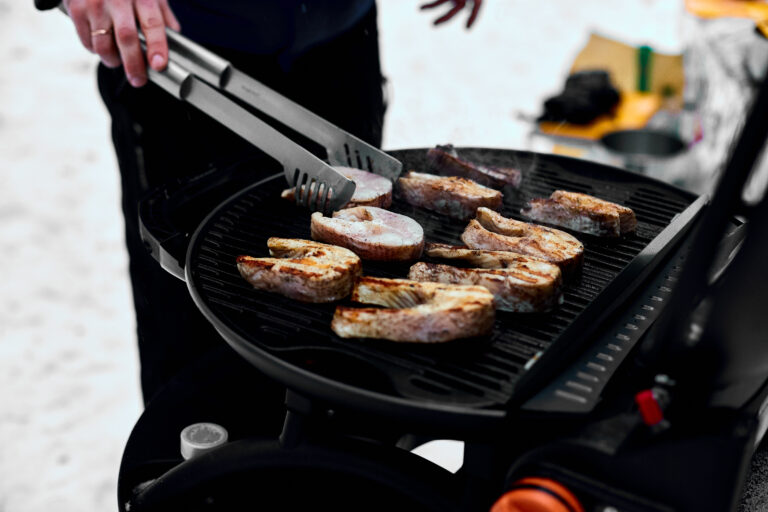5 Differences Between Electric vs Gas Grill for Better BBQ Results
Electric grills offer easy setup, immediate heating, precise temperature control, and simple cleaning, perfect for small spaces and quick meals. Gas grills excel in quick heating, superior temperature control, smoky flavor infusion, large cooking capacity, and are suitable for larger gatherings.
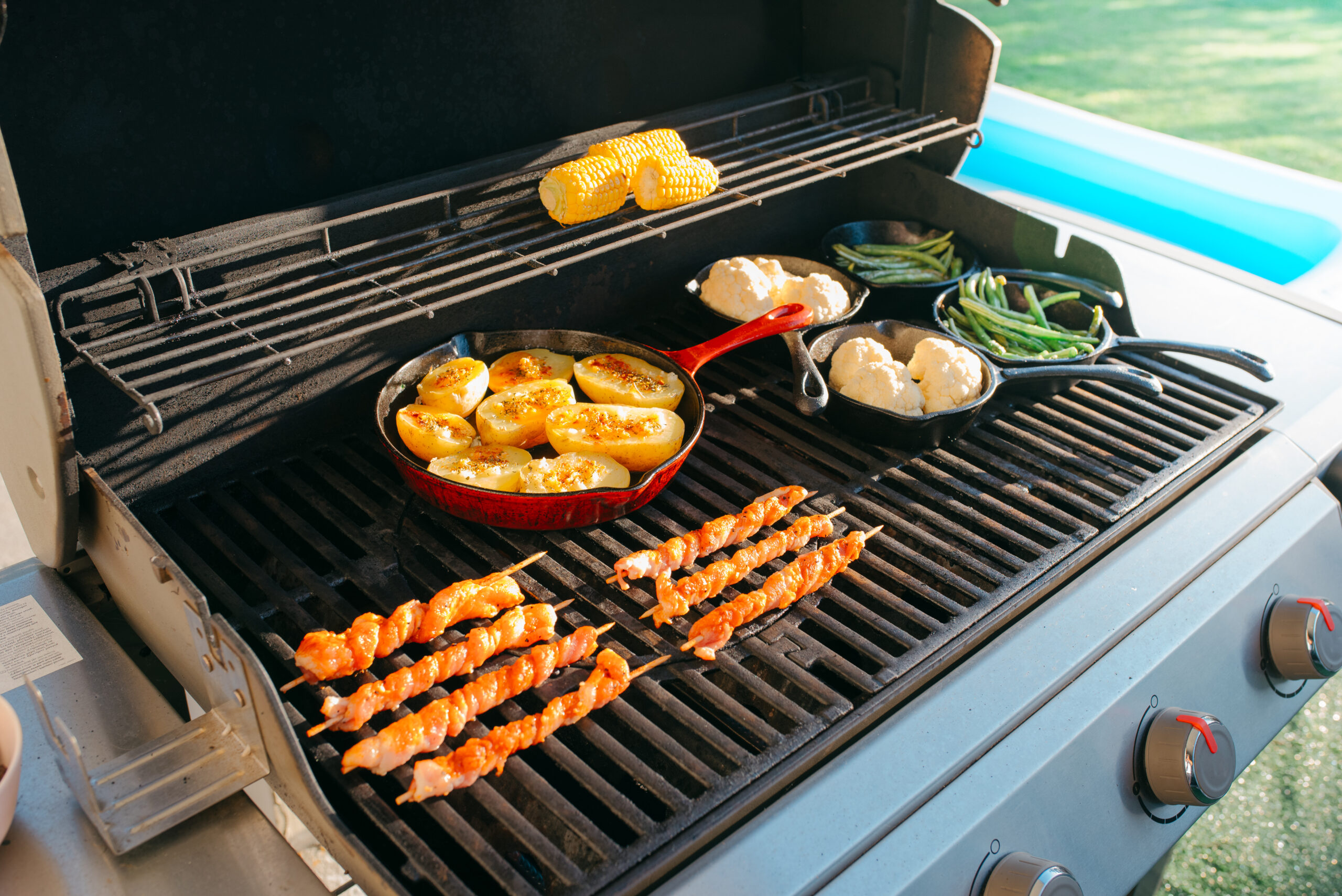
Deciding between an electric grill and a gas grill can significantly impact your cooking convenience and the flavors you cherish. Each offers distinct advantages, whether you’re flipping burgers on a balcony or hosting a backyard barbecue.
Disclosure: As an Amazon Associate, this site earns from qualifying purchases. Thank you!
Ease of Use for Electric Grills

Electric grills offer unparalleled convenience with a plug-and-play approach, making them ideal for quick setups and easy use.
- Immediate Heating: Just plug in your electric grill, turn it on, and you’re ready to cook; there’s no need to wait for charcoals to heat up or worry about igniting propane.
- Temperature Control: Electric grills provide precise temperature settings, allowing you to cook your food at the exact temperature you need without guessing.
- Accessibility: Whether you’re in an apartment or a small house, electric grills are perfect as they don’t require large outdoor spaces or specific fuel types.
- Easy Cleaning: Electric grills typically feature non-stick surfaces and removable parts that are dishwasher safe, making cleanup a breeze.
- No Fuel Management: You won’t need to refill propane tanks or clean up ash from coal, which eliminates a good deal of the traditional maintenance associated with grilling.
- Durability: With fewer mechanical parts than gas grills, electric models often showcase a longer lifespan with minimal upkeep.
Choose electric grills for their simplicity and efficiency, allowing you to focus more on the joy of cooking and less on the hassle of preparation and cleanup.
Ease of Use for Gas Grills
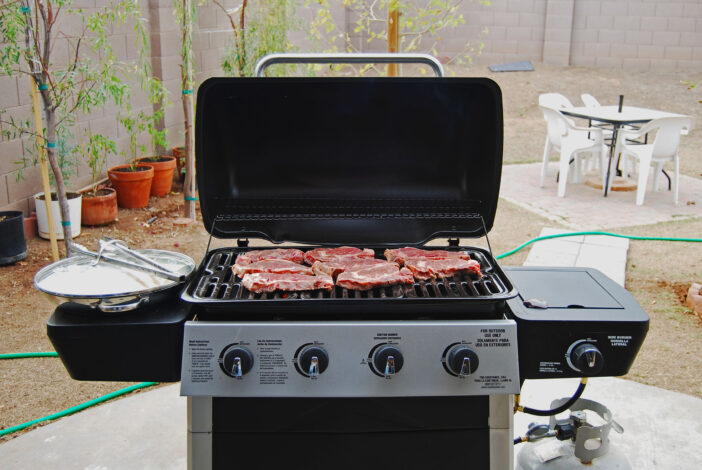
Shifting focus from electric grills, gas grills present their own set of advantages that enhance the cooking experience.
Quick Heating Times
Gas grills excel in heating efficiency. They typically reach the desired cooking temperature much faster than electric grills. This feature is especially beneficial when you’re pressed for time or need to cook multiple batches. You can expect most gas grills to be ready for cooking in about 10 minutes, making them ideal for spontaneous barbecues or quick dinners.
Greater Control Over Cooking Temperature
Another significant advantage of using gas grills is the superior temperature control they offer. Unlike electric grills, where temperature adjustments can be slow, gas grills allow for immediate changes. This immediate responsiveness gives you the flexibility to sear steaks at high temperatures or slowly roast vegetables on a lower heat, perfecting your dishes to your liking. This control is achieved through simple knob adjustments, which let you fine-tune the flame size and heat output on the fly.
Installation and Setup: Electric vs Gas Grills
Setting up your grill can greatly affect your cooking experience. Let’s dive into what you’ll need for each type.
Electric Grill
- Power Source: You’ll need a standard electrical outlet. Most electric grills require a 120-volt outlet, typically found in every kitchen.
- Space: Ensure you have a stable, flat surface near the outlet. Electric grills are well-suited for indoor use or small outdoor spaces like balconies.
- Safety Checks: Check for any exposed wiring or damaged components before use.
- Initial Setup: Unpack and assemble according to the manufacturer’s manual. This usually involves minimal effort with no special tools required.
Gas Grills
- Fuel Source: You’ll need access to either a propane tank or a natural gas line. Propane tanks are widely available and portable, while natural gas requires a built-in line.
- Safe Location: Choose an outdoor location with good ventilation. Ensure the grill is placed far from any flammable materials.
- Assembly: More complex than electric grills, gas grills often require more time and tools to assemble.
- Safety Inspections: It’s important to check all connections for leaks using soapy water before igniting the grill for the first time.
Each type of grill offers distinct setup requirements that could influence your choice depending on your living situation and convenience preferences.
Convenience in Maintenance and Cleaning
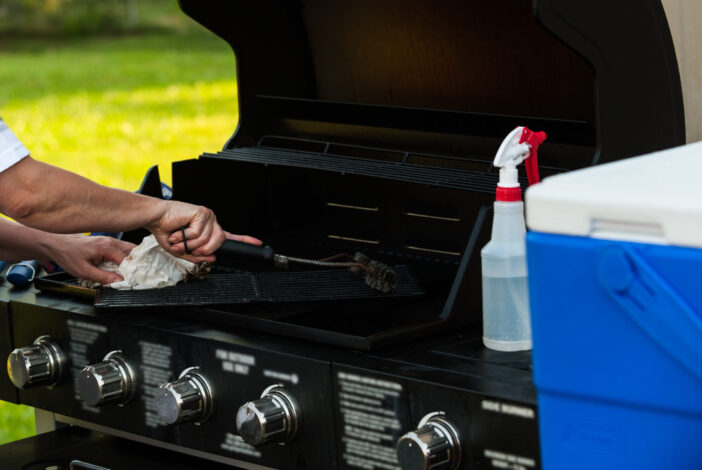
Moving from the setup and initial use, let’s delve into what it takes to maintain and clean these grills, ensuring they last longer and perform at their best.
Cleaning an Electric Grill
Cleaning an electric grill is generally simpler due to its design and fewer parts. Here’s how you can do it efficiently:
- Disconnect and Cool: Ensure the grill is unplugged and completely cooled down.
- Remove Detachable Parts: Take out any removable plates or grates. These are often dishwasher-safe, making your job easier.
- Wipe the Elements: Use a damp cloth to clean the heating elements. Avoid using abrasive materials that could damage them.
- Clean the Surface: Wipe the grill’s surface with a sponge and a mild detergent, then rinse with water.
- Dry Thoroughly: Make sure all parts are dry before reassembling and storing to prevent rust and corrosion.
Cleaning a Gas Grill
Cleaning a gas grill can be more challenging because of its multiple components and exposure to grease and food residues:
- Turn Off and Disconnect: Ensure the grill is turned off and the gas source is disconnected.
- Scrub the Grates: Use a grill brush to scrub the grates thoroughly. For deep cleaning, you may need a commercial grate cleaner.
- Clean Burners and Covers: Remove burners and burner covers to clear out any blockages and wash them separately.
- Wipe Down the Interior: Scrape grease and residue from the grill’s interior with a putty knife and wipe with a damp cloth.
- Inspect and Reassemble: Check for any damage or excessive wear before putting the grill back together.
These steps highlight the essential aspects of maintaining each type of grill, ensuring maximum convenience and longevity.
Portability and Space Considerations
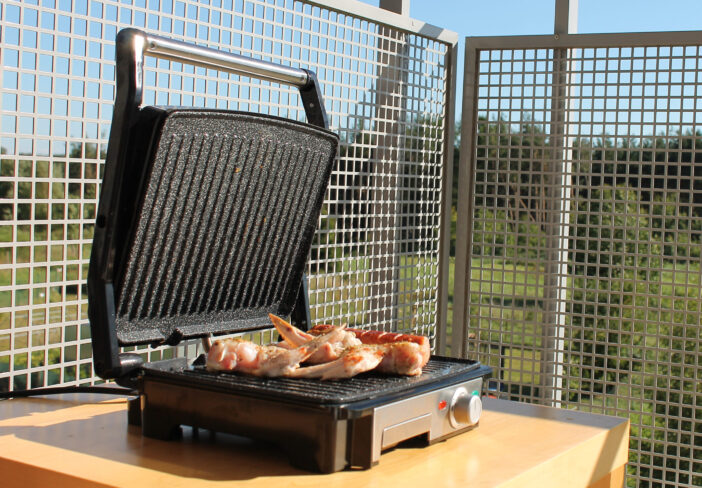
When considering a grill, it’s crucial to factor in how easy it is to move and how much space it’ll take up.
Portability of Electric Grills
Electric grills shine in portability. They’re typically lighter, compact, and easy to carry. You can move your electric grill from your kitchen to your balcony or take it with you on camping trips, as long as there’s access to an electrical outlet. Brands like George Foreman and Weber offer models that are particularly designed for easy transport.
Portability of Gas Grills
In contrast, gas grills are generally more cumbersome. They rely on propane tanks, which add to the weight and complication of moving them. However, some smaller models, like the Weber Q Series or the Char-Broil Classic, are designed with portability in mind, featuring wheels and handlebars for easier mobility.
Space Requirements for Safe Use
Both electric and gas grills need specific considerations for safe operation. Electric grills require proximity to an outlet and a stable, flat surface away from water sources. Gas grills need more open space due to their open flame; it’s essential to ensure that they’re used in a well-ventilated area, clear of low-hanging branches or flammable materials. Typically, a clearance of a few feet is recommended around the entire grill to prevent any fire hazards.
Cost Comparison: Electric Grill vs Gas Grill
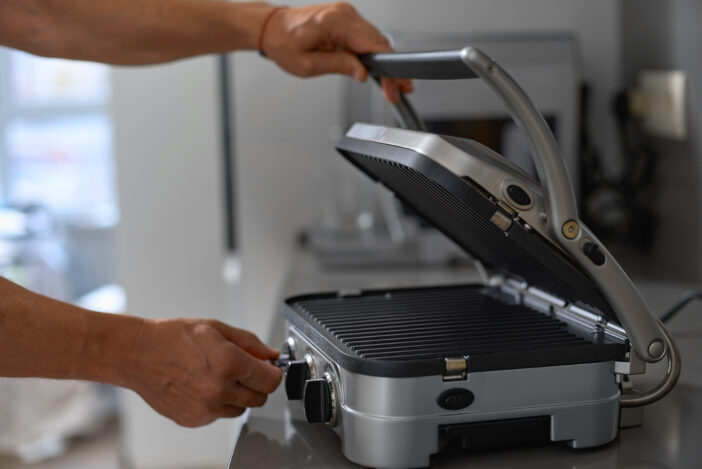
Initial Investment Costs
When you’re choosing between electric and gas grills, it’s crucial to consider the upfront costs. Electric grills tend to be more budget-friendly, with entry-level models starting as low as $100. In contrast, gas grills generally have a higher initial price, often starting at about $200 for basic models and increasing significantly for high-end units.
Ongoing Operational Costs
Considering the longer-term expenses is just as important. Electric grills shine in operational costs due to their use of electricity, which is typically less expensive than propane or natural gas used by gas grills. For instance, the cost to power an electric grill for an hour might only be a few cents, depending on your local electricity rates. On the other hand, using a gas grill involves buying and refilling propane tanks or setting up natural gas lines, which can add up over time. Additionally, gas grills tend to consume more energy due to higher BTU outputs necessary for quick heating and temperature control.
Safety Features and Considerations
Moving on from the convenience and efficiency aspects of electric and gas grills, let’s delve into the critical safety features and considerations inherent to each type.
Safety Features of Electric Grills
Electric grills excel in safety due to their design and operating mechanics. Here are some key points you should be aware of:
- No Open Flame: Electric grills use heating elements, reducing fire risks associated with open flames.
- Automatic Shut-off Features: Many models come equipped with timers and automatic shut-off functions, mitigating the risk of overheating.
- Stable Temperature Control: Electricity allows for consistent heat, diminishing the chances of flare-ups common in gas grills.
- Indoor Usage: Without the need for ventilation of combustible gases, electric grills are safe for indoor use, making them versatile for all weather conditions.
Safety Features of Gas Grills
Gas grills, with their robust design for intense cooking, have distinct safety features tailored to their needs:
- Flame Control Knobs: These allow immediate adjustment of the heat level, giving you better control over the cooking environment.
- Built-in Thermometers: Gas grills often include thermometers to monitor the cooking temperature, preventing overheating.
- Safety Valves: Should the flame extinguish unexpectedly, these valves cut off gas flow to prevent uncontrolled gas leaks.
- Ventilation Requirements: Properly designed for outdoor use, gas grills require open spaces to ensure the safe dispersal of combustible gases.
By understanding the safety nuances of electric and gas grills, you can make an informed decision that aligns with your cooking preferences and safety priorities.
Impact on Food Flavor and Cooking Capacity
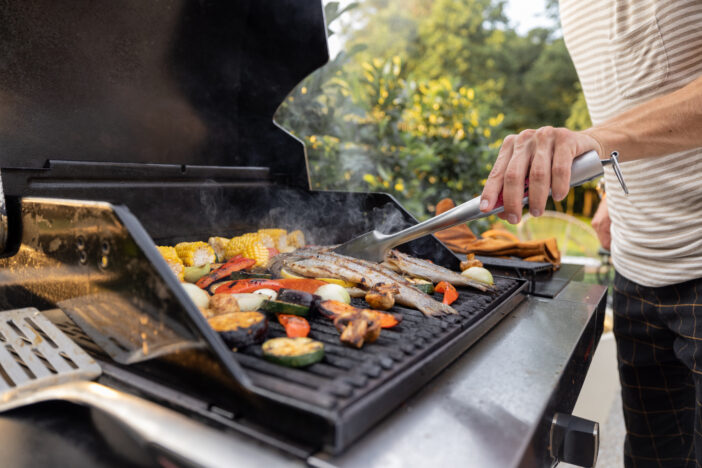
When selecting a grill, flavor, and capacity are critical factors that influence your cooking experience. Let’s explore how electric and gas grills stack up in these areas.
Flavor Profiles Offered by Electric Grills
Electric grills provide a clean and consistent heat that is perfect for cooking foods evenly without the infusion of additional flavors. They excel with delicate foods like fish, vegetables, and poultry, which benefit from a milder, smoke-free flavor. This makes electric grills ideal if you prefer the natural taste of your ingredients with fewer smoke and charred flavors.
Flavor Profiles Offered by Gas Grills
Gas grills are known for their ability to add a smoky flavor to the food, which many barbecue enthusiasts crave. They utilize propane or natural gas, creating flames that can char the food slightly for a classic, grilled taste. This smoky characteristic is especially suited for red meats and hearty vegetables that are enhanced by a richer, deeper flavor profile.
Comparative Cooking Space and Ability
Gas grills generally offer more cooking space compared to electric grills, making them suitable for large gatherings and more complex meals. They can handle higher volumes of food and provide greater flexibility with various cooking zones. Electric grills, however, often have compact designs tailored for convenience and small spaces like patios or balconies. While the space might be limited, electric grills heat up quickly, providing efficiency for smaller, quicker meals. This makes them a fantastic option for everyday use, especially when you’re pressed for time.
Frequently Asked Questions
What are the main benefits of using an electric grill?
Electric grills are praised for their convenience, precise temperature control, and ease of maintenance. They heat up quickly and maintain consistent temperatures, making them ideal for delicate foods and everyday indoor use.
How do gas grills compare to electric grills in terms of temperature control?
Gas grills offer superior temperature control and can reach higher temperatures quickly than electric grills. This makes them suitable for grilling dense meats and achieving a smoky flavor.
Are electric grills easier to clean than gas grills?
Yes, electric grills tend to be easier to clean. They generally have fewer parts and a simpler design, which reduces the effort needed for maintenance and cleanup.
Which type of grill is safer to use indoors?
Electric grills are considered safer for indoor use due to their lack of open flames and reduced emission of harmful gasses, making them a preferable option for grilling within enclosed spaces.
Can gas grills be used for larger gatherings?
Yes, gas grills are typically better suited for larger gatherings. They often have more extensive cooking surfaces and the capability to handle larger amounts of food at once, making them ideal for hosting bigger groups.
What type of food is best cooked on an electric grill?
Electric grills provide a clean and consistent heat that is ideal for cooking more delicate foods such as fish, vegetables, and poultry without overpowering their natural flavors.
How does the flavor of food cooked on a gas grill differ from that cooked on an electric grill?
Food cooked on gas grills tends to have a smoky flavor, which is preferred when grilling red meats. Conversely, electric grills do not impart any additional flavor to the food, preserving the original taste profiles of the ingredients.




